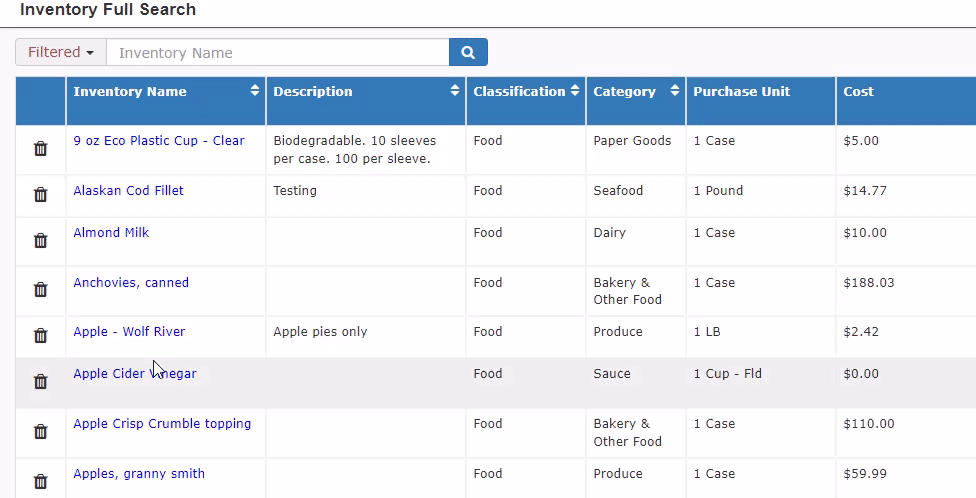Question?
How many times have you or someone on your team had to leave an off-site event to drive back to your kitchen/warehouse for items that were forgotten when packing?
If you’re like me, then I would guess one too many times. I can say from first hand experience that investing some time into automating your pack lists will make you and your team’s life so much easier.
You will probably wonder why you didn’t do it sooner.
First Step
TPP’s pack list automation is a very powerful tool that can save your team hours prepping for weekly events. There are many facets to pack lists, which makes them a little challenging to implement, but will definitely be worth the time and effort to set up.
Database Inventory
The first step is probably the most important step…making sure all of the equipment items you use for events are in your TPP database correctly. Not just obvious things like chafers and tables, but little things that are easy to forget like frill picks and trash can liners.
You probably have a list already of items to choose from when packing for an event. These inventory items (if not already) can be entered in your database under any of the available Inventory Classifications and Categories to be used in pack lists.
Click here for our help article about adding Inventory to your database.
NOTE: You can create new custom Categories, but the Classifications are fixed.
We also have an import template you may fill out and send to us for upload of new equipment.
First you can review your inventory that is already in TPP by going to Inventory > Full Search.

Make sure you have your filters adjusted to All in order to see everything in your inventory database.

If the drop down says Filtered instead of All, click it to open and reset/change the filters.

Tips for Inventory Data
Naming
If you want to ensure that your database is easy to manage, I would recommend the following format method when entering new items.
Disposables, Visions 10″ Plate
Disposables, Bamboo 7″ Square
Table, 6′ Rectangular
VS
Bamboo 7″ Square Plate
Table, 6′ Rectangular
Visions 10″ Disposable Plate
The reason the top format is recommended is that TPP tends to sort alphabetically and having the name of the type of item first ensures that all Tables, Linens, Utensils, etc. are all sorted together instead of randomly sorted based on alphabetical sorting.
EXAMPLE

This is a small example, but when you have a normal pack list that has 100+ items on it, naming items in a consistent format makes it so much easier to read through the list and find things quickly. This is a completely optional step, though.
Costing
If you set up your items in TPP with correct costing, your pack list equipment can also be considered when calculating profit and costing on events.
For more information about this, click here for more guidance or reach out to our Client Care team with any questions.
First Step Conclusion
So, making sure all of your items are in TPP is the most important step to complete before moving forward.
If you forget an item or two, no big deal as they can easily be added when you remember…just try to get as comprehensive of a list as possible in TPP so that you have a good place to start when we move on the the next step…

